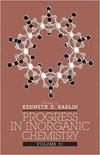The Interface of Nanoscale Inclusion Chemistry
引用次数: 6
Abstract
Abstract : This review presents a selected review of nanoscale inclusion chemistry using 3-D periodic hosts with an emphasis on optical properties. Inclusion chemistry is defined in the context of the above discussion as the interaction between a 3-D host surfaces with one or more types of guests. It is an area receiving increased enthusiasm and interest because of the basic research concepts and challenges that remain to be explored. The host is in effect a solid state inorganic molecular recognition template. Ideally, this packaging would make it possible to: selectively modulate the host framework electronic or optical properties with guest atoms or molecules; impose selected order-disorder constraints on the self-organization process; modify internanophase behavior by varying the host dielectric constant and guest concentration; generate electronically or coordinatively unsaturated atomic assemblies; synthesize nanocomposite materials in which the host and guest interact in a synergistic or combinatorial fashion to give tunable or new properties.纳米级包合化学的界面
摘要/ Abstract摘要:本文综述了基于三维周期主体的纳米级包裹体化学的研究进展,重点介绍了其光学性质。在上述讨论中,包合化学被定义为三维宿主表面与一种或多种客体之间的相互作用。这是一个受到越来越多的热情和兴趣的领域,因为基本的研究概念和挑战仍有待探索。宿主实际上是一种固态无机分子识别模板。理想情况下,这种封装将有可能:选择性地用客体原子或分子调制主框架的电子或光学特性;对自组织过程施加选择性有序-无序约束;通过改变主介电常数和客体浓度来改变纳米相间行为;生成电子或配位不饱和原子组合;合成纳米复合材料,其中主客体以协同或组合方式相互作用,以获得可调或新的性能。
本文章由计算机程序翻译,如有差异,请以英文原文为准。
求助全文
约1分钟内获得全文
求助全文

 求助内容:
求助内容: 应助结果提醒方式:
应助结果提醒方式:


